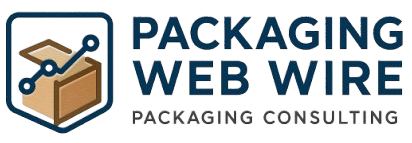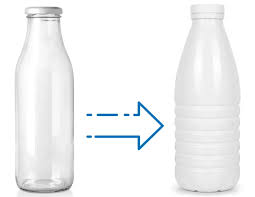The global glass-to-plastic packaging market is experiencing a powerful shift as industries seek lightweight, cost-effective, and sustainable alternatives to traditional glass packaging. Projected to surge into the hundreds of millions in revenue between 2025 and 2034, this transformation is catalyzing innovation in materials, design, and technology across industries including food and beverage, pharmaceuticals, and cosmetics. With Asia Pacific leading in market share and North America emerging as a fast-growing region, businesses worldwide are reevaluating their packaging strategies to meet changing consumer preferences and environmental goals.
Glass-to-plastic packaging refers to the replacement of glass containers—bottles, vials, jars—with plastic counterparts that are lighter, shatter-resistant, and more cost-efficient. Materials like PET (Polyethylene Terephthalate), HDPE, PP, and bioplastics are becoming the preferred options due to their flexibility, durability, and lower environmental impact when used in conjunction with recycling and sustainable production technologies.
Invest in Our Premium Strategic Solution: https://www.towardspackaging.com/download-sample/5678
Key Market Insights and Metrics (2024 Baseline)
- Asia Pacific held the largest market share of 42%
- North America is projected to grow at the fastest CAGR through 2034
- Plastic bottles dominated product segmentation with 38% share
- Plastic vials & tubes to see significant growth during the forecast period
- PET was the leading material, comprising 45% of the market
- Bio-based plastics segment showed notable expansion
- Food & Beverages led by application with 40% market share
- Pharmaceuticals & Skincare segment set to grow rapidly
- FMCG dominated end-use with 50% of the market
- E-commerce distribution channels are growing rapidly alongside traditional manufacturers
Drivers of Market Growth
- Shift to Lightweight, Durable Packaging: Glass alternatives such as PET and bioplastics reduce transportation costs and breakage risks, enhancing their appeal across sectors.
- Booming E-commerce and Retail Expansion: The growth of online retail is demanding more flexible and durable packaging solutions.
- Advanced Recycling Technologies: Innovations in circular economy strategies and material recovery are easing sustainability concerns.
- Cost Efficiency for SMEs: Plastic is far cheaper to produce and ship than glass, making it a logical choice for emerging brands and SMEs.
- Environmental Incentives and Policy Shifts: Government regulations and carbon-reduction goals are pushing companies toward bio-based and recyclable plastic solutions.
Key Emerging Trends
- Rise of PET and Biodegradable Plastics: These materials are being rapidly adopted due to their environmental advantages and ability to mimic glass aesthetics.
- Customization and Design Flexibility: Innovations in packaging aesthetics and structure help brands differentiate in competitive markets.
- AI Integration in Manufacturing: AI is being utilized for defect detection, reducing waste, and enhancing operational efficiency.
Opportunities & Restraints
- Opportunity: The e-commerce boom is opening new avenues for flexible and bulk plastic packaging solutions that reduce costs and improve product safety during transit.
- Restraint: Environmental concerns about plastic pollution remain a major challenge, especially in regions enforcing single-use plastic bans.
Segment Analysis Product Types: Plastic bottles are replacing glass across a variety of applications from beverages to oils. Vials and tubes are gaining traction in pharmaceuticals and cosmetics, offering flexibility and safety.
Material Types: PET leads the charge due to its lightweight and recyclable nature. Bio-based plastics are rising fast, supported by sustainability goals and government incentives.
Applications: Food & beverage remains the top market, but skincare and pharmaceutical sectors are accelerating due to demand for hygienic and portable packaging.
End-use Industries: FMCG dominates the usage landscape, with significant investments in sustainable plastic strategies. Healthcare and beauty industries are also expanding rapidly in plastic adoption.
Distribution Channels: Traditional manufacturers and contract packers still dominate but e-commerce platforms are growing in significance, especially for bulk and custom packaging needs.
Regional Insights Asia Pacific: Holding the lion’s share of the market in 2024, APAC is benefiting from low labor costs, high raw material availability, and major packaging investments. Nations like China, India, and Japan are seeing exponential demand from e-commerce, cosmetics, and FMCG industries.
North America: Poised to become the fastest-growing region, North America’s growth is being driven by innovations in sustainable plastics, government recycling initiatives, and rising consumer awareness. Key players are investing in R&D to deliver circular economy-aligned solutions.
Key Companies in the Glass-to-Plastic Packaging Market
- Amcor Plc
- Berry Global Inc.
- Graham Packaging Company
- Plastipak Holdings, Inc.
- Alpla Group
- Comar LLC
- Gerresheimer AG
- Weener Plastics
- SKP Group
- Pretium Packaging
- Mondi Group
- CL Smith Company
- Logoplaste
- SRPCO (Saudi Plastic)
- Sealed Air Corporation
- Phoenix Packaging Group
- RPC Group (Berry Global)
- Alpha Packaging
- Tetra Pak
- Nampak Ltd.
These companies are leading the way in delivering innovative, recyclable, and cost-efficient plastic solutions to meet the demand of modern industries transitioning away from glass.
Conclusion As sustainability, cost, and durability become central pillars of modern packaging, the global glass-to-plastic packaging market is positioned for robust growth. With evolving technologies, regional dynamics, and forward-thinking companies, 2025 is shaping up to be a pivotal year for this market transformation. The continued adoption of recyclable and bio-based plastics, coupled with digital and AI-enabled advancements, will define the next era of packaging innovation worldwide.
For businesses and investors alike, the time to tap into this fast-growing market is now—before the next wave of packaging disruption leaves traditional solutions behind.
Source: https://www.towardspackaging.com/insights/glass-to-plastic-packaging-market-sizing


